"Strategy Dynamics Essentials" provides a summarised version of the full Strategy Dynamics textbook:
Strategic Management
Dynamics.
It's more compact format provides a thorough overview of the Strategy Dynamics approach and can be used – in whole or in part –
to support workshops, courses or independent study.
The book is concerned with the development and management of key resources in business and not-for-profit organisations.
Chapters 1- 4 demonstrate simple frameworks for the development of isolated resources – customers, staff, and so on –
before developing progressively more detailed models for how these different resources are developed and sustained.
Anyone involved in marketing and sales, human resources, product development, and operations
management will therefore find a collection of frameworks that add important concepts to
their knowledge.
The book is also of use to entrepreneurs, as it focuses on the developing, integrating and
sustaining basic resources. Using the Strategy Dynamics framework can add considerable confidence to the
resulting business plans for new ventures. Indeed, the launches of many such ventures have been
substantially revised and enhanced as a result of this scrutiny, whilst others that do not promise a
viable future have been abandoned. Chapters 1-4 provide the essential elements for this purpose,
whilst a review of the likely rivalry in which a new venture will be involved can be examined with
the tools in chapter 7.
Chapter summary with sample graphic from each chapter
Chapter 1: Building Performance Over Time
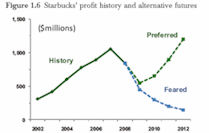
1.1 A Life-Cycle Example: Blockbuster® Inc.
1.2 Strategic Management: Positioning versus Delivery
1.3 What “Performance” Do We Want To Improve?
1.4 Building Future Performance
1.5 Non-financial Performance Objectives and
Not-for-profit Organizations
1.6 Levels of Strategy
1.7 Example: Low-fare Airline Ryanair
Worksheets related to this chapter
Chapter 2: How Resources Drive Performance
2.1 Strategy Methods Focusing on External Factors
2.2 Strategy Methods Focusing on Firm-specific Factors
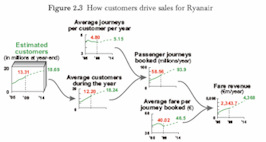
2.3 Limitations of Common Strategy Approaches
2.4 Tangible Resources and Profits
2.5 From Performance to Resources
2.6 Resources and Nonfinancial Performance
2.7 “Stocks” of Resources
2.8 When Resources Themselves Are the Objective
2.9 Specifying and Quantifying Resources
Chapter 3: Resources Won and Lost
3.1 Quantifying the “Bathtub Behavior” of Resources
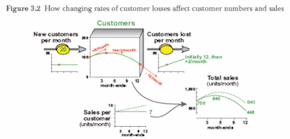
3.2 Accumulation over Time
3.3 Consequences of Resource Accumulation
3.4 Resources Won and Lost by Ryanair
3.5 “Accounting” for Resources
3.6 Control over the Building and
Retaining of Resources
3.7 Generic Behaviors and Their Drivers
Chapter 4: Interdependence and the Strategic Architecture
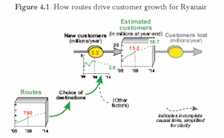
4.1 Competition and Other External Factors
4.2 Existing Resources Drive Gains and Losses
4.3 How Resources Drive Their Own Growth and Loss
4.4 The Role of Potential Resources
4.5 The Strategic Architecture
4.6 Functional Issues and Other Objectives
Worksheets related to this chapter
Chapter 5: Resource Quality
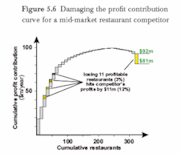
5.1 Size Is Not the Same as Quality
5.2 Attributes of Other Resources
5.3 When Resources Bring Access to Others
5.4 Using the Quality Curve to Beat Competitors
5.5 Other Uses for the Quality Curve and Resource Attributes
Worksheets related to this chapter
Chapter 6: Developing Resources
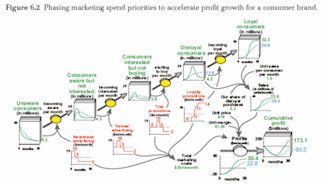
6.1 Developing Staff
6.2 The Customer Choice Pipeline
6.3 Product Development
6.4 Deteriorating Resources
6.5 How Resources Develop in
Noncommercial Cases
6.6 Boundaries of the Firm
Worksheets related to this chapter
Chapter 7: Competitive Rivalry
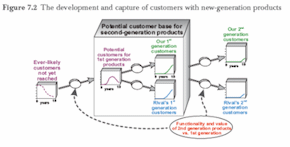
7.1 Type-1 Rivalry
7.2 Type-2 Rivalry
7.3 Type-3 Rivalry
7.4 Further Issues in the Three Types of Rivalry
7.5 Competing with Intermediaries
7.6 Competing for Other Resources
7.7 Rivalry in Noncommercial Cases
7.8 Dealing with Multiple Competitors
Worksheets related to this chapter
Chapter 8: Steering Strategy and Performance
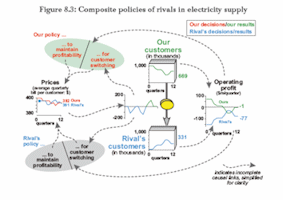
8.1 The Difference between Good
and Poor Strategies
8.2 Steering Strategy and Performance
8.3 Policy to Guide Decisions
8.4 Controlling Indirect Decisions and Interference
8.5 Conflicting Objectives
8.6 Goals and Policy in Noncommercial Cases
Worksheets related to this chapter
Chapter 9: Intangible Resources
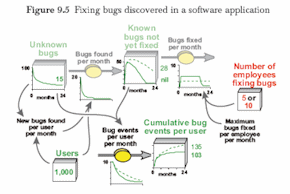
9.1 State-of-Mind Intangibles
9.2 Information-based Intangible Resources
9.3 Quality-based Intangibles
Worksheets related to this chapter
Chapter 10: Capabilities
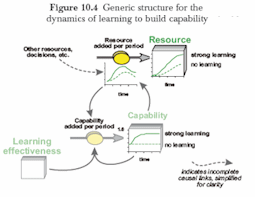
10.1 Dimensions of Capability
10.2 Learning Develops Capability
10.3 Capabilities Not Linked to Resource-building
10.4 The Balanced Scorecard
10.5 Capabilities in Public Sector and Voluntary Organizations
Worksheets related to this chapter
Conclusions and Further Steps
Appendix: Technical Specification
Ryanair 2009 update
The textbook Strategic Management Dynamics developed over several chapters a dynamics analysis of
Europe’s low-fare airline Ryanair, from 1995 to 2006. Strategy Dynamics Essentials updates this
analysis to 2009. The data and models for this update are provided in
Ryanair 2009 Update Files (Zip), which includes:
- A spreadsheet of reported performance and other data for Ryanair from 1995 to 2009, and
illustrative projections to 2014.
- A series of small simulation models that run in mystrategy, including a full model of the airline,
matching the spreadsheet data.
- A document explaining how these models relate to the dynamics analysis of Ryanair that develops
through chapters 1 to 5 of Strategy Dynamics Essentials.
It is not necessary to have Strategy Dynamics Essentials to make use of these materials.